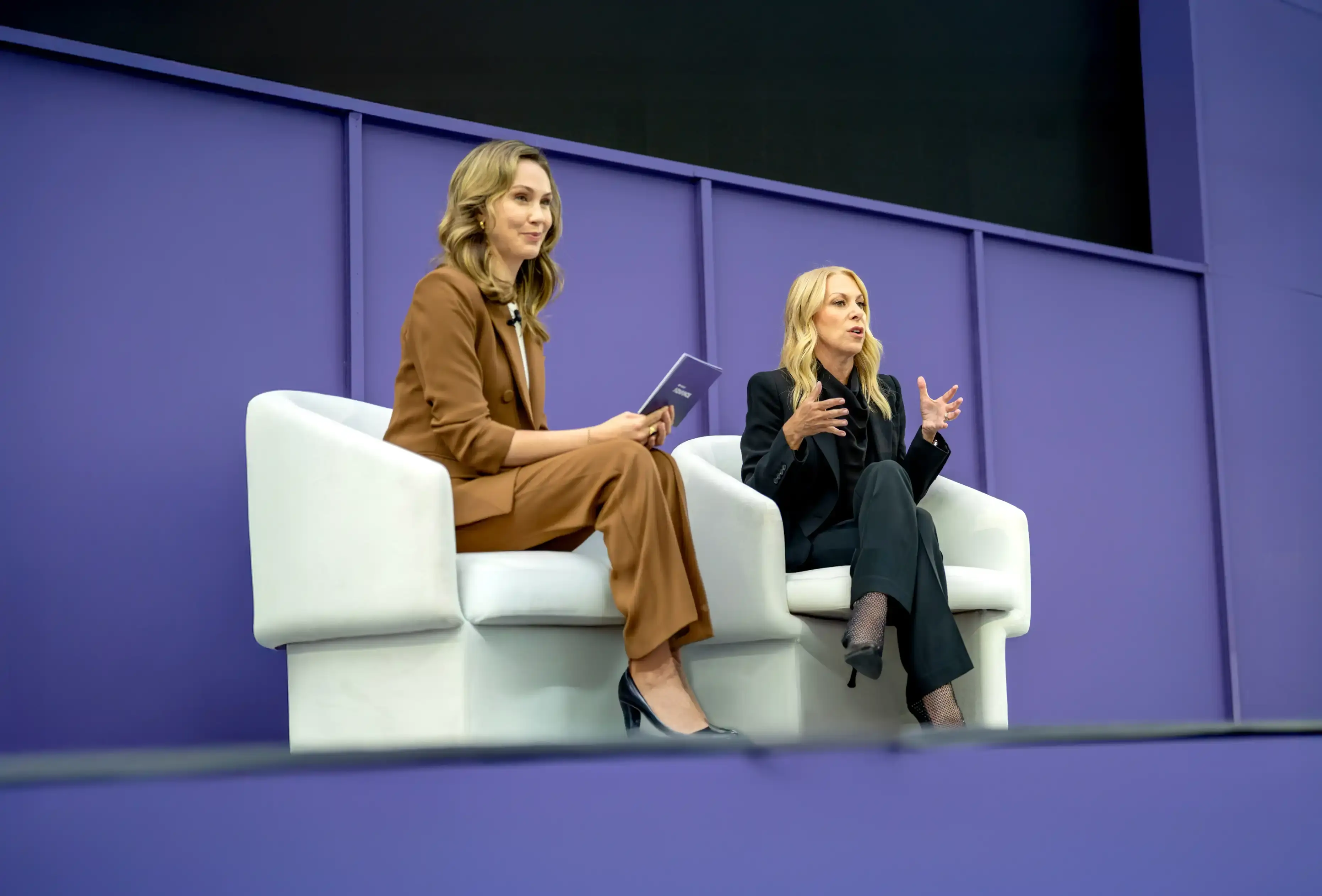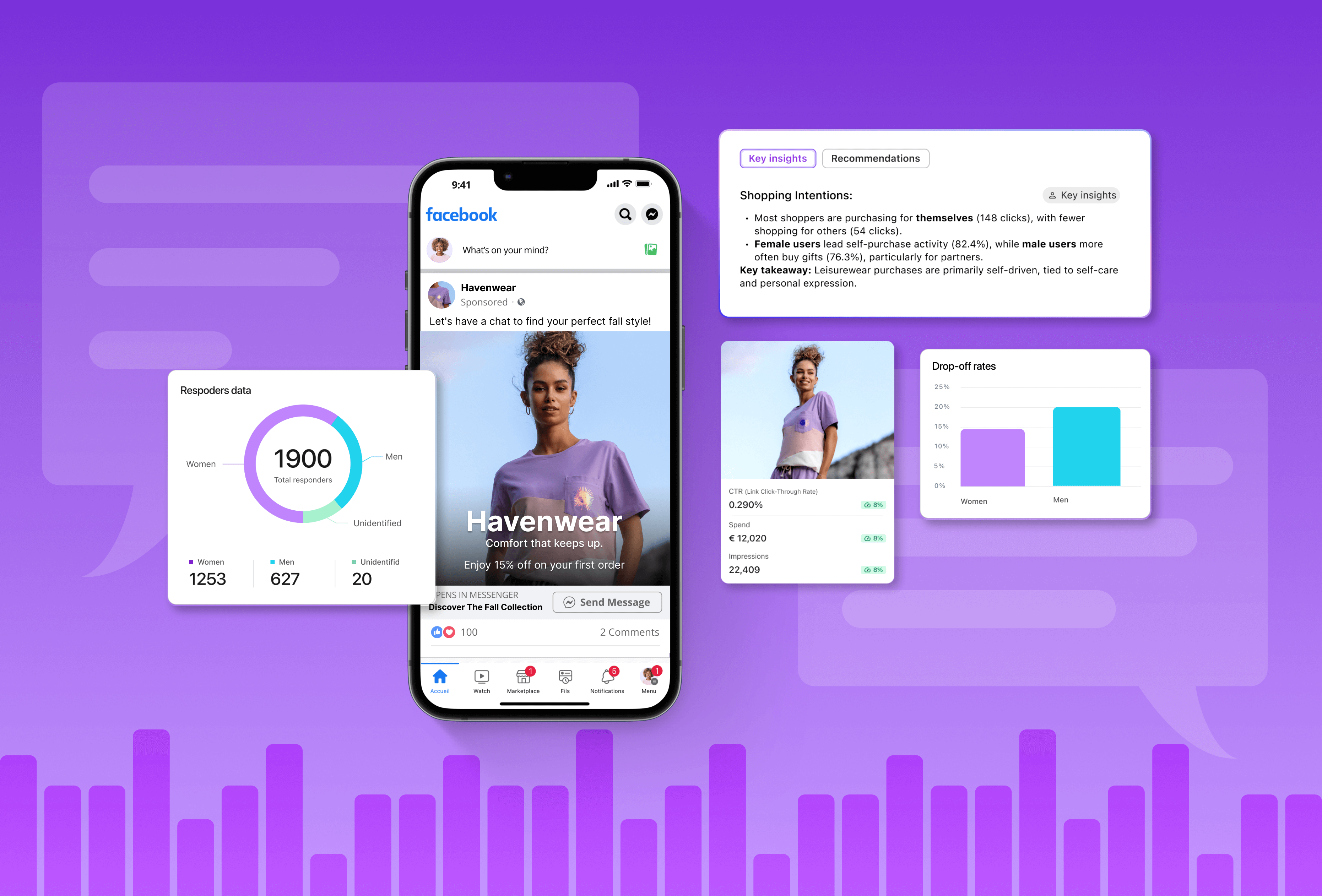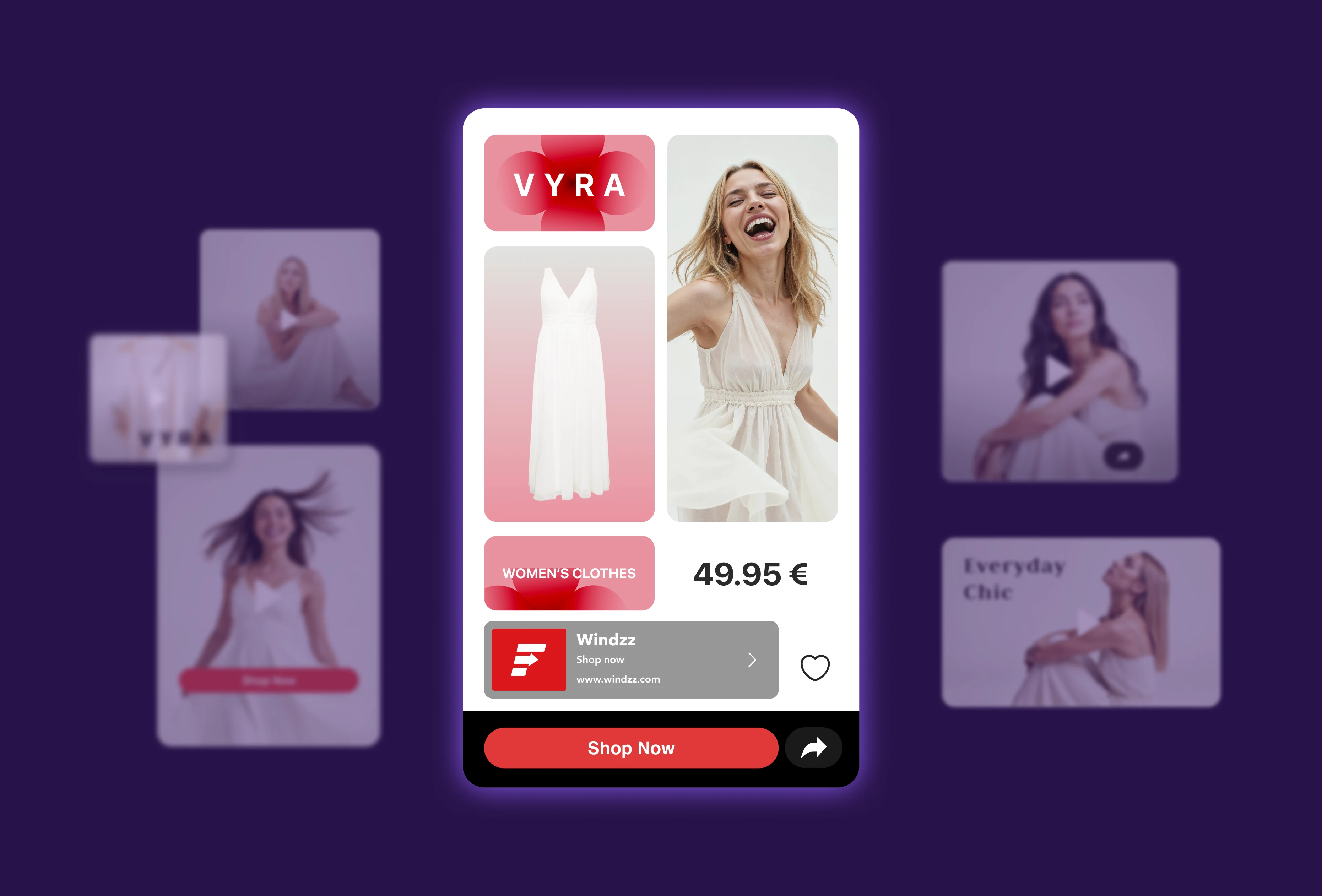
AI’s Next Chapter: Multiplying Creativity, Accelerating Velocity, and Building Trust
At ADVANCE 2025, one theme rose above the noise: AI has shifted from promise to practice. What once felt experimental is now mission-critical. As speaker after speaker reminded the audience, the future of AI in advertising isn’t about replacement. It’s about expansion.
From main stage keynotes to deep-dive panels, the message was consistent: the marketers who will lead in the years ahead are those who embrace AI now. And use it as a multiplier for creativity, unlock creative velocity as their new competitive edge, and double down on brand trust as the ultimate moat.
AI as a Multiplier, Not a Replacement
Fear often dominates the AI conversation: Will algorithms replace creative teams? Will machines write stories instead of journalists? At ADVANCE, leaders across industries made it clear that these fears miss the point.
As Laura Desmond reminded the audience in her opening keynote: “Our industry has never been about the tool. It’s about how we use it and the impact and the feeling that people have on the other side”.
Jessica Sibley, CEO of TIME, echoed this perspective calling it “AI journalism” when describing her company’s approach to incorporating AI. “AI will not replace that. … It’s about personalization, and it’s about the new ways of discovering and engaging in content”. TIME is using AI to translate stories into multiple languages, generate audio formats, and tailor experiences for readers. But at the core, its journalism remains human.
Consumer sentiment backs this up. According to AI in Advertising: What Consumers Expect in 2025, nearly half (48%) of consumers say they most trust ads created by a human with AI support, while only 13% trust ads made entirely by AI. The expectation is clear: AI should extend human creativity, not erase it.
With tools like Smartly’s URL-to-Ad, an article or product page can be transformed into an on-brand, ready-to-run creative in minutes. The result isn’t less creativity. It’s more.
Creative Velocity is the New Competitive Advantage
If there was one phrase that captured the urgency of ADVANCE 2025, it came from Laura Desmond’s keynote: “We must disrupt ourselves before technology does it to us”.
The call to action wasn’t about abstract innovation. It was about speed. Today’s audiences consume content at an unprecedented pace, flipping from discovery to purchase in a single scroll. The only way brands can keep up is through velocity: the ability to create, test, and scale creative assets at cultural speed.
The New York Times: Content as a Catalog
The New York Times offered a vivid example at ADVANCE 2025. By treating its journalism like a product catalog, the Times scaled more than 90 variations of gameplay ads for its subscription-driving campaign. Rather than rely on a single “hero” ad, the team used Smartly’s creative automation to continuously generate and test new variations, turning everyday content into a subscription engine.
This strategy demonstrates what creative velocity really looks like: not just speed, but speed with integrity. Even lower-funnel ads retained the publication’s quality and voice, proving that scale and brand consistency can coexist.
A Fluid Funnel Demands Agility
In the Commerce AI Breakout, From Attention to Action, John Kahn of Digitas US described the challenge of today’s “fluid funnel,” where a single piece of content can serve as brand awareness, product discovery, and direct conversion all at once: “Every content experience should be looked at as a potential commerce experience”. That requires content to move as fast as the culture surrounding it.
AI in Advertising: What Consumers Expect in 2025 confirms this shift: 84% of consumers say ads that feel personal are more memorable, and 83% say they are more likely to trust ads that make them feel understood. Velocity isn’t just about more output. It’s about generating the right creative variations that spark emotional relevance.
Smartly and Velocity at Scale
This is where AI delivers its greatest advantage. With Smartly’s automation and creative feeds, advertisers can scale thousands of creative variations across channels, testing, learning, and personalizing in real-time. Consumers already see the benefit: 53% say AI-powered ads provide endless variety, reducing ad fatigue.
Velocity has become the new battleground. And AI is the engine that makes it possible.
Brand Trust as the Ultimate Moat
While AI brings scale and speed, it also raises new concerns: authenticity, ethics, and the erosion of trust. At ADVANCE, leaders repeatedly stressed that in a synthetic world, trust is the one asset technology cannot replicate.
As John Kahn described it, “In an increasingly synthetic world powered by AI, humanity, empathy, and brand trust will command a premium.”
Jessica Sibley of TIME described her company’s dual strategy: protecting intellectual property while leaning into innovation. TIME is working with AI firms to ensure its journalism isn’t misused, even as it uses AI tools to distribute that journalism more widely. “We had decided in the early days, to work with the smartest CEO founders of all of these AI companies to make us part of the ecosystem, because not being part of it … is an exception to the future of Time”.
AI in Advertising: What Consumers Expect in 2025 shows just how fragile consumer trust is. While 72% of consumers say they generally trust AI, two-thirds (66%) remain concerned about how their data is being used. Transparency and human oversight are essential: 84% of consumers say brands should be required to disclose when AI is used to create an ad.
That’s why Smartly builds governance into its creative workflows, allowing brands to personalize at scale while maintaining brand safety and authenticity. In a landscape where algorithms are table stakes, trust becomes the moat that competitors cannot breach.
The Path Forward
ADVANCE 2025 marked a turning point. AI is no longer a test-and-learn experiment. It is the foundation of modern marketing. But as the conversations revealed, winning in this era requires more than adopting new tools.
- Multiply, don’t replace: AI must extend human creativity, not erase it.
- Accelerate velocity: In a collapsed funnel, creative speed is everything.
- Protect trust: In a synthetic world, authenticity is the ultimate differentiator.
Laura Desmond put the stakes plainly: “By 2028, 100% of advertising will be powered by AI”. The only question is which brands will be ready.
Smartly is committed to helping marketers make that leap, delivering the AI-powered scale, speed, and safeguards that turn this crucible moment into a lasting competitive advantage.
ADVANCE 2025 is only the beginning. The revolutionary ideas shared in New York are already reshaping marketing, and if you weren’t in the room, these recaps are your next best bet. More takeaways will be rolling out in the coming weeks. Stay tuned to stay ahead.
Join the conversation with #ADVANCE2025 on LinkedIn.
AI’s Next Chapter: Multiplying Creativity, Accelerating Velocity, and Building Trust

At ADVANCE 2025, one theme rose above the noise: AI has shifted from promise to practice. What once felt experimental is now mission-critical. As speaker after speaker reminded the audience, the future of AI in advertising isn’t about replacement. It’s about expansion.
From main stage keynotes to deep-dive panels, the message was consistent: the marketers who will lead in the years ahead are those who embrace AI now. And use it as a multiplier for creativity, unlock creative velocity as their new competitive edge, and double down on brand trust as the ultimate moat.
AI as a Multiplier, Not a Replacement
Fear often dominates the AI conversation: Will algorithms replace creative teams? Will machines write stories instead of journalists? At ADVANCE, leaders across industries made it clear that these fears miss the point.
As Laura Desmond reminded the audience in her opening keynote: “Our industry has never been about the tool. It’s about how we use it and the impact and the feeling that people have on the other side”.
Jessica Sibley, CEO of TIME, echoed this perspective calling it “AI journalism” when describing her company’s approach to incorporating AI. “AI will not replace that. … It’s about personalization, and it’s about the new ways of discovering and engaging in content”. TIME is using AI to translate stories into multiple languages, generate audio formats, and tailor experiences for readers. But at the core, its journalism remains human.
Consumer sentiment backs this up. According to AI in Advertising: What Consumers Expect in 2025, nearly half (48%) of consumers say they most trust ads created by a human with AI support, while only 13% trust ads made entirely by AI. The expectation is clear: AI should extend human creativity, not erase it.
With tools like Smartly’s URL-to-Ad, an article or product page can be transformed into an on-brand, ready-to-run creative in minutes. The result isn’t less creativity. It’s more.
Creative Velocity is the New Competitive Advantage
If there was one phrase that captured the urgency of ADVANCE 2025, it came from Laura Desmond’s keynote: “We must disrupt ourselves before technology does it to us”.
The call to action wasn’t about abstract innovation. It was about speed. Today’s audiences consume content at an unprecedented pace, flipping from discovery to purchase in a single scroll. The only way brands can keep up is through velocity: the ability to create, test, and scale creative assets at cultural speed.
The New York Times: Content as a Catalog
The New York Times offered a vivid example at ADVANCE 2025. By treating its journalism like a product catalog, the Times scaled more than 90 variations of gameplay ads for its subscription-driving campaign. Rather than rely on a single “hero” ad, the team used Smartly’s creative automation to continuously generate and test new variations, turning everyday content into a subscription engine.
This strategy demonstrates what creative velocity really looks like: not just speed, but speed with integrity. Even lower-funnel ads retained the publication’s quality and voice, proving that scale and brand consistency can coexist.
A Fluid Funnel Demands Agility
In the Commerce AI Breakout, From Attention to Action, John Kahn of Digitas US described the challenge of today’s “fluid funnel,” where a single piece of content can serve as brand awareness, product discovery, and direct conversion all at once: “Every content experience should be looked at as a potential commerce experience”. That requires content to move as fast as the culture surrounding it.
AI in Advertising: What Consumers Expect in 2025 confirms this shift: 84% of consumers say ads that feel personal are more memorable, and 83% say they are more likely to trust ads that make them feel understood. Velocity isn’t just about more output. It’s about generating the right creative variations that spark emotional relevance.
Smartly and Velocity at Scale
This is where AI delivers its greatest advantage. With Smartly’s automation and creative feeds, advertisers can scale thousands of creative variations across channels, testing, learning, and personalizing in real-time. Consumers already see the benefit: 53% say AI-powered ads provide endless variety, reducing ad fatigue.
Velocity has become the new battleground. And AI is the engine that makes it possible.
Brand Trust as the Ultimate Moat
While AI brings scale and speed, it also raises new concerns: authenticity, ethics, and the erosion of trust. At ADVANCE, leaders repeatedly stressed that in a synthetic world, trust is the one asset technology cannot replicate.
As John Kahn described it, “In an increasingly synthetic world powered by AI, humanity, empathy, and brand trust will command a premium.”
Jessica Sibley of TIME described her company’s dual strategy: protecting intellectual property while leaning into innovation. TIME is working with AI firms to ensure its journalism isn’t misused, even as it uses AI tools to distribute that journalism more widely. “We had decided in the early days, to work with the smartest CEO founders of all of these AI companies to make us part of the ecosystem, because not being part of it … is an exception to the future of Time”.
AI in Advertising: What Consumers Expect in 2025 shows just how fragile consumer trust is. While 72% of consumers say they generally trust AI, two-thirds (66%) remain concerned about how their data is being used. Transparency and human oversight are essential: 84% of consumers say brands should be required to disclose when AI is used to create an ad.
That’s why Smartly builds governance into its creative workflows, allowing brands to personalize at scale while maintaining brand safety and authenticity. In a landscape where algorithms are table stakes, trust becomes the moat that competitors cannot breach.
The Path Forward
ADVANCE 2025 marked a turning point. AI is no longer a test-and-learn experiment. It is the foundation of modern marketing. But as the conversations revealed, winning in this era requires more than adopting new tools.
- Multiply, don’t replace: AI must extend human creativity, not erase it.
- Accelerate velocity: In a collapsed funnel, creative speed is everything.
- Protect trust: In a synthetic world, authenticity is the ultimate differentiator.
Laura Desmond put the stakes plainly: “By 2028, 100% of advertising will be powered by AI”. The only question is which brands will be ready.
Smartly is committed to helping marketers make that leap, delivering the AI-powered scale, speed, and safeguards that turn this crucible moment into a lasting competitive advantage.
ADVANCE 2025 is only the beginning. The revolutionary ideas shared in New York are already reshaping marketing, and if you weren’t in the room, these recaps are your next best bet. More takeaways will be rolling out in the coming weeks. Stay tuned to stay ahead.
Join the conversation with #ADVANCE2025 on LinkedIn.
Honestly, we'd rather just show you.
Chat with our team to see how Smartly transforms the fragmented advertising ecosystem into something suspiciously manageable.








%201%20(1)%201%201.avif)

